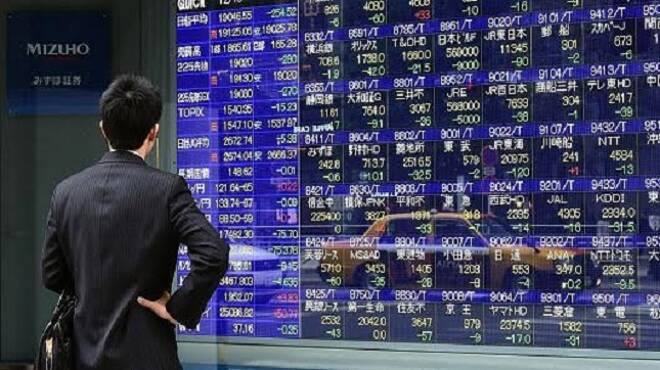Advertisement
Advertisement
Strong Eurozone Production Numbers Fail to Buoy Stocks
By:
European stock markets are narrowly mixed, with DAX and FTSE 100 only posting minimal gains. Asian markets still closed solidly higher after yesterday's
European stock markets are narrowly mixed, with DAX and FTSE 100 only posting minimal gains. Asian markets still closed solidly higher after yesterday’s positive close on Wall Street, but the optimistic mood fizzled out in Europe and U.S. stock futures are slightly in negative territory, and oil prices have fallen back below the USD 51 per barrel mark once again. The DAX started lower, but managed to move up after stronger than expected Eurozone production numbers for August, but investors are still shying away from breaking the illusive 13000 mark for the first time. The FTSE 100 outperformed throughout the morning, but gains are also contained. The Spanish IBEX meanwhile managed to rise after yesterday’s relief rally, but with the central government in Madrid issuing an ultimatum to Barcelona the constitutional crisis is far from resolved and likely to continue to add some volatility.
WTI futures are down 1.1% at $50.50, which is a few cents from the day’s low. This is the first down day of the week, which saw prices rise by 4.7% in making a 10-day peak at 51.42 yesterday. Weekly API data showed a 3.1 million barrel rise in U.S. stocks in the last reporting week, which sparked the correction, offsetting threats from Trump to impose sanctions on Iranian oil, and possible supply disruptions in Venezuela.
The BoE Q3 credit conditions survey points to big contraction in consumer credit over the next three months, which is expected to be the biggest quarterly drop since the crisis days of Q4 2008. The comes come as the rate hike in a decade is widely being anticipated from the BoE in November, an erosion in inflation-adjusted household income, and a good measure of Brexit uncertainty, with the government still unable to signal whether a no-deal hard exit or a softer version of leaving the EU is in store.
Eurozone Industrial Production was Higher than Expected
Eurozone industrial production higher than anticipated in August. Production jumped 1.4% month over month, and with July revised up to 0.3% month over month from 0.1%, the annual rate lifted to a very strong 3.8% year over year from 3.6% year over year in the previous month. Variations over the summer are partly due to the timing of school holidays, but the strong annual rate over both months ties in with the signals from survey data that show ongoing robust growth over the summer. More arguments then for the hawkish camp at the ECB, although with political risks and uncertainties still hanging over the union there doesn’t seem to be a majority in favor of a firm commitment to an end date for QE just yet.
About the Author
David Beckerauthor
David Becker focuses his attention on various consulting and portfolio management activities at Fortuity LLC, where he currently provides oversight for a multimillion-dollar portfolio consisting of commodities, debt, equities, real estate, and more.
Advertisement
